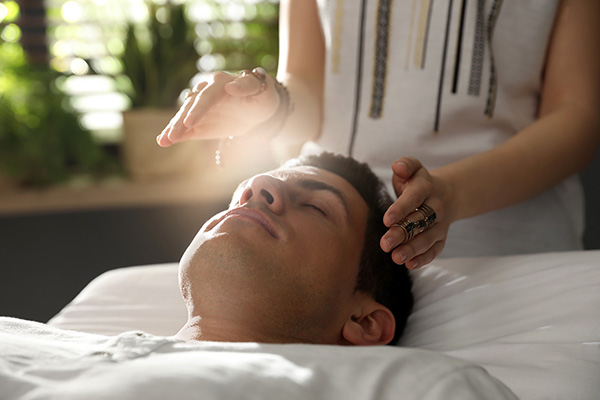The Basics Of Reiki
 Reiki is popular concept in modern spirituality, metaphysics and energy healing. It is therefore good for anyone interested in these fields to have a basic understanding of this technique to engage in discussions with likeminded people in a meaningful way.
Reiki is popular concept in modern spirituality, metaphysics and energy healing. It is therefore good for anyone interested in these fields to have a basic understanding of this technique to engage in discussions with likeminded people in a meaningful way.
The term reiki is a combination of two Japanese words. Rei means ‘divine wisdom’ or ‘divine power,’ and ki means ‘life force energy’ or ‘vital human energy.’ Reiki is therefore a ‘divinely empowered life force.’
Reiki, or rather the system of Reiki, was developed in Japan a century ago by a Buddhist monk known as Mikao Usui. He was a renowned spiritual man who dedicated his life to being of service to others. While seeking spiritual awakening on Mount Kurama, north of the Japanese city of Kyoto, he was divinely inspired with the gift of Reiki. It was introduced to the United States in the late 1930s by Hawayo Hiromi Takata, a Japanese-American woman who received training in Reiki in Tokyo and became a master practitioner.
Although it is more commonly known only as a form of energy healing, true Reiki is in fact a comprehensive spiritual practice and a conscious lifestyle. Yes, it involves the healing of the mind and body, but it also proposes living in total peace with oneself, and being aware of your own unique purpose and spiritual light within. The system of Reiki seeks to remove the layers of fear, worry and attachments that conceal our innate brightness of being.
The Reiki system consists five specific elements, namely precepts (principles), meditations, hands-on healing, symbols, and the attunement or reiju ritual. Using all five these elements, the practitioner removes the layers that cover the patients innate brightness.
The real out come of practicing the system of Reiki are the precepts. No anger, worry and fear, feeling humble, honest and compassionate to ourselves and others ~ Frans Stiene
The five Reiki precepts are:
Just for today, I will not worry.
Just for today, I will not be angry.
Just for today, I will be grateful.
Just for today, I will do my work honestly.
Just for today, I will be kind to every living thing.
Reiki practitioners uses ‘palm healing’ or ‘hands-on healing’ to channel universal life energy through the palms of their hands towards patient to induce physical or emotional healing. During a Reiki session, the patient remains clothed and the practitioner’s hands hardly touches the body, or not at all. Patients often report feeling extremely relaxed, and it is not uncommon for patients to fall asleep during the process.
Reiki does not, however, require physical proximity to achieve the same benefits. Patients can also experience significant results with long distance Reiki treatments. An experienced Reiki practitioner can transfer healing energy from themselves to their patient regardless of distance. Distance Reiki sessions are a wonderful healing option for people who cannot leave their home, or who do not have a reputable Reiki practitioner working in their community.
Just for today, do not anger. Do not worry and be filled with gratitude. Devote yourself to your work. Be kind to people. Every morning and evening, join your hands in prayer ~ Mikao Usui
Reiki can be applied in the treatment a variety of symptoms and ailments. In fact, Reiki is becoming increasingly popular as a complementary therapy in hospitals and clinics, due to its effectiveness. Studies show, for example, that Reiki is useful for relieving pain, strengthening the immune system and body’s ability to heal itself, reducing inflammation, decreasing stress, anxiety and depression, and improving quality of life.
For someone suffering chornic pain or emotional imbalance, seeking Reiki treatment may be an excellent course of action as a complement to traditional healthcare. Being able to live a full and complete life is the greatest gift anyone can receive. Whether these energy healing treatments are administered locally or from a distance, Reiki will benefit anyone who believes in its powerful effects.
|
|

Leave a Reply